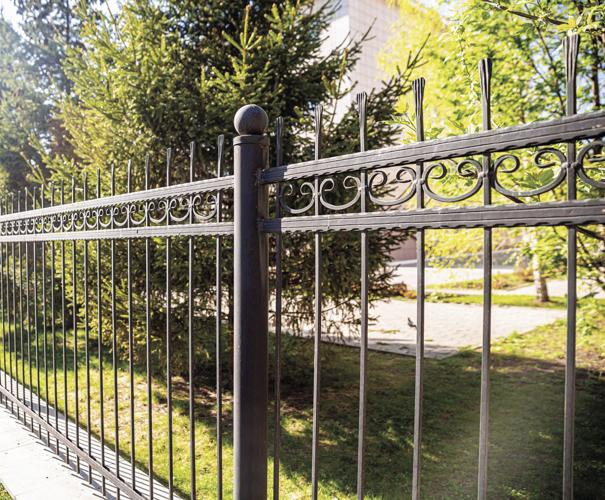All Categories
Featured
Mounting a fencing on your home can include privacy, protection, and visual allure, however before you start digging holes and establishing articles, it's vital to understand whether you need a permit. The kind of fencing you intend to mount, where it will be put, and local zoning laws can all affect the allowing procedure. Not obtaining the essential authorizations might cause penalties or the need to get rid of the fencing. Here's what you require to know to make sure a smooth setup process.
Why Are Permits Necessary for Fencing Installation? Licenses are vital for ensuring that your fence conforms with neighborhood zoning regulations and building regulations. These laws help make certain the safety of your residential or commercial property and the surrounding area. Furthermore, permits avoid disagreements with neighbors or neighborhood authorities, particularly when it involves property lines, height limitations, and overall layout.
In many situations, regional authorities need licenses to control things like visibility at junctions or the distance of a fencing to public rooms like roadways or sidewalks. Licenses additionally assist make certain that fences are set up correctly and safely, especially when it comes to special materials or high fencings.
Typical Kinds Of Licenses for Fence Installation. The kind of fencing you intend to set up and your location will certainly establish which licenses are required. Right here are one of the most common types:
Building Authorization. A building permit is usually needed for fencings that surpass particular height restrictions (typically above 6 feet), lie near a public roadway or walkway, or are made from certain products. Structure permits make sure that the structure fulfills regional building ordinance, consisting of security criteria.
Zoning Permit. Zoning permits are typically called for to make sure that your fence abides by local zoning legislations. Zoning laws can define where a fence can be placed on your residential or commercial property (e.g., along residential property lines or in front yards), in addition to established limits on fencing height. These legislations are created to stop blockages that can impact website traffic safety or community appearances.
![]()
Problem License. In some areas, you may require a trouble license to place your fence a certain range from home lines, roadways, or utilities. Obstacles are meant to preserve correct area in between structures and building borders, minimizing potential problems with next-door neighbors or public framework.
Homeowners Association (HOA) Approval. You will likely need authorization from the HOA prior to mounting a fence if your building is component of an area regulated by a Homeowners Organization (HOA) HOA guidelines often control the style, height, products, and even color of fencings, ensuring that they match the total visual of the area.
The Refine for Acquiring a Fencing Authorization. To get a fence permit, you commonly require to contact your regional city or region workplace. Most areas have a building division or planning workplace where you can look for authorizations. The procedure involves completing an application and offering thorough details concerning your recommended fencing, consisting of:
Fencing design (materials, height, design) Place on the residential or commercial property. Residential or commercial property line details (for exact positioning) In several cases, a website plan showing the proposed fencing's position will certainly be called for. You may also need to pay a license charge, which can differ based upon area and the intricacy of the project.
Once you submit your application, the neighborhood authorities will certainly review it to make certain the fence abides by regional regulations. Depending on your location, you may additionally need to permit or arrange an examination for a residential property study.
When Do You Not Required an Authorization? In many cases, a license might not be called for. Usually, you could not need a license if:
![]()
The fence is under a certain elevation (usually 3-4 feet for front lawns) You're replacing an existing fence with the exact same type and elevation. The fence is temporary (such as a garden fencing) Nonetheless, it's always a great idea to check with your local structure or zoning department to validate the requirements, as policies can vary.
Consequences of Not Obtaining an Authorization. In some cases, you may need to re-install the fencing according to code, which might be expensive and lengthy. Additionally, not following the correct allowing procedure can produce troubles with neighbors, specifically if your fence extends past your building line or does not satisfy elevation or style requirements.
Conclusion. Before mounting a fence, make sure you're conscious of the neighborhood regulations and whether you require an authorization. By acquiring the proper authorizations, you'll make sure that your fence is legally certified, safe, and cost-free from future complications.
Why Are Permits Necessary for Fencing Installation? Licenses are vital for ensuring that your fence conforms with neighborhood zoning regulations and building regulations. These laws help make certain the safety of your residential or commercial property and the surrounding area. Furthermore, permits avoid disagreements with neighbors or neighborhood authorities, particularly when it involves property lines, height limitations, and overall layout.
In many situations, regional authorities need licenses to control things like visibility at junctions or the distance of a fencing to public rooms like roadways or sidewalks. Licenses additionally assist make certain that fences are set up correctly and safely, especially when it comes to special materials or high fencings.
Typical Kinds Of Licenses for Fence Installation. The kind of fencing you intend to set up and your location will certainly establish which licenses are required. Right here are one of the most common types:
Building Authorization. A building permit is usually needed for fencings that surpass particular height restrictions (typically above 6 feet), lie near a public roadway or walkway, or are made from certain products. Structure permits make sure that the structure fulfills regional building ordinance, consisting of security criteria.
Zoning Permit. Zoning permits are typically called for to make sure that your fence abides by local zoning legislations. Zoning laws can define where a fence can be placed on your residential or commercial property (e.g., along residential property lines or in front yards), in addition to established limits on fencing height. These legislations are created to stop blockages that can impact website traffic safety or community appearances.

Problem License. In some areas, you may require a trouble license to place your fence a certain range from home lines, roadways, or utilities. Obstacles are meant to preserve correct area in between structures and building borders, minimizing potential problems with next-door neighbors or public framework.
Homeowners Association (HOA) Approval. You will likely need authorization from the HOA prior to mounting a fence if your building is component of an area regulated by a Homeowners Organization (HOA) HOA guidelines often control the style, height, products, and even color of fencings, ensuring that they match the total visual of the area.
The Refine for Acquiring a Fencing Authorization. To get a fence permit, you commonly require to contact your regional city or region workplace. Most areas have a building division or planning workplace where you can look for authorizations. The procedure involves completing an application and offering thorough details concerning your recommended fencing, consisting of:
Fencing design (materials, height, design) Place on the residential or commercial property. Residential or commercial property line details (for exact positioning) In several cases, a website plan showing the proposed fencing's position will certainly be called for. You may also need to pay a license charge, which can differ based upon area and the intricacy of the project.
Once you submit your application, the neighborhood authorities will certainly review it to make certain the fence abides by regional regulations. Depending on your location, you may additionally need to permit or arrange an examination for a residential property study.
When Do You Not Required an Authorization? In many cases, a license might not be called for. Usually, you could not need a license if:

The fence is under a certain elevation (usually 3-4 feet for front lawns) You're replacing an existing fence with the exact same type and elevation. The fence is temporary (such as a garden fencing) Nonetheless, it's always a great idea to check with your local structure or zoning department to validate the requirements, as policies can vary.
Consequences of Not Obtaining an Authorization. In some cases, you may need to re-install the fencing according to code, which might be expensive and lengthy. Additionally, not following the correct allowing procedure can produce troubles with neighbors, specifically if your fence extends past your building line or does not satisfy elevation or style requirements.
Conclusion. Before mounting a fence, make sure you're conscious of the neighborhood regulations and whether you require an authorization. By acquiring the proper authorizations, you'll make sure that your fence is legally certified, safe, and cost-free from future complications.
Latest Posts
Don’t Miss Limited-Time Auto Repair Specials in Chicago at Montclare Auto Repair
Published en
1 min read
Explore Save Big on Car Maintenance with Montclare Auto Repair’s Limited-Time Deals
Published en
1 min read
Explore the Premier Auto Repair Deals in Montclare, Chicago
Published en
1 min read
More
Latest Posts
Don’t Miss Limited-Time Auto Repair Specials in Chicago at Montclare Auto Repair
Published May 28, 25
1 min read
Explore Save Big on Car Maintenance with Montclare Auto Repair’s Limited-Time Deals
Published May 28, 25
1 min read
Explore the Premier Auto Repair Deals in Montclare, Chicago
Published May 25, 25
1 min read